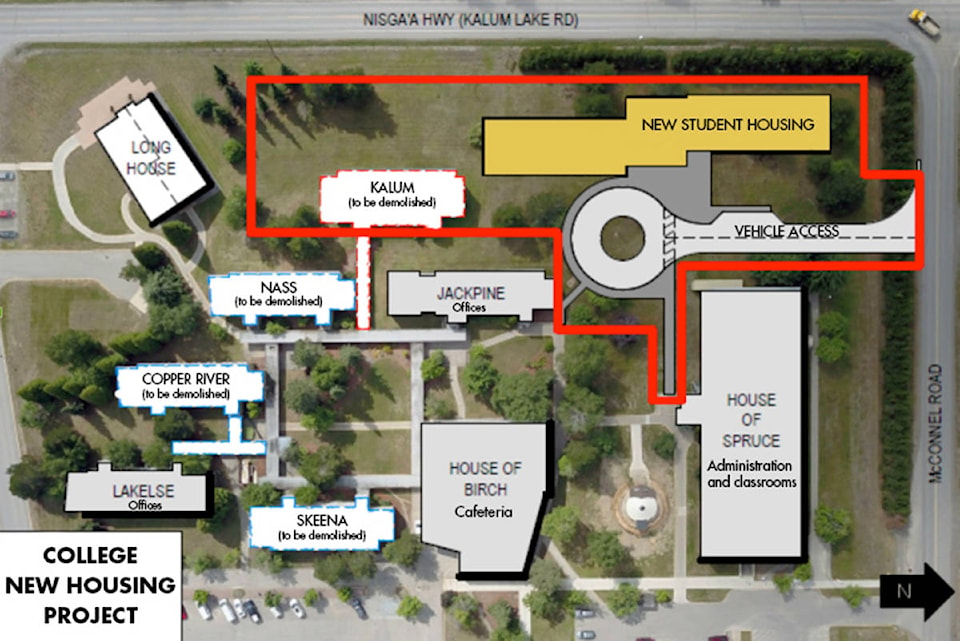Contractors interested in the $17 million project to replace outdated student housing at the Coast Mountain College campus here were on a site tour this week, a step toward submitting bids next month followed by a contract being signed in May.
Based on a schedule set out by the college, 104 student rooms and four guest suites of modular wooden construction are to be ready for occupancy by Aug. 2021.
They’ll replace 71 rooms in four buildings first constructed in the 1970s and now considered past their useful life as student residences.
A large open area at the northwest corner of the campus bounded by McConnell and Hwy 113/Kalum Lake Drive has been designated as the location of the new buildings.
There’ll be a street entrance off of McConnell to allow pick up and drop off of people by bus or automobile.
The successful contractor will design as well as build the new housing and will also be responsible for the demolition and removal of the four residence buildings.
Although the design, construction and demolition has a projected price tag of $17 million, the total project cost is $19.7 million, of which $18.7 million is from the provincial government and $1 million is from the college.
READ MORE: Coast Mountain College appoints a new president
College communications director Sarah Zimmerman says the demolitions will take place only after the new housing is ready for occupancy.
“No. We won’t be without student housing during the construction,” she says of the need to provide accommodation for this calendar year and up to and including the summer of 2021.
Leading up to asking for requests for proposals, Zimmerman says there were 12 initial expressions of interest from contractors.
Bidders on the design/build contract are required to meet high levels of energy efficiency as set out by the province and a certification system called Leadership in Energy and Environmental Design in addition to meeting the objectives of provincial legislation requiring as much wood as possible be used.
A system has been established to grade bids and a significant number of points are to be awarded based on incorporating First Nations culture and familiarity in the design.
“The use of natural light is a foundational principle for reinforcing a First Nations atmosphere in all communally-shared zones,” indicates one of the evaluation considerations.
And should a contractor’s bid pricing amount to more than the $17 million allotted for the project, the contractor may propose a series of steps to reduce costs to that $17 million figure.
The first is to eliminate air conditioning from student rooms followed by, if necessary, removing the demolition of, in order, the Nass, Copper and Skeena residence buildings. This would leave Kalum as the only one left. It’s now vacant after being considered unsuitable for student housing.
The student housing construction is the second substantial project to emerge from a capital spending plan first set out by the college five years ago and adjusted as needed.
The first project was a substantial rebuild of the trades building, a project which cost $18.4 million and which was completed in 2018.
At one point Coast Mountain College here had well over 100 rooms for students.
One residence building, Lakelse, was taken out of service because of flooding and after repairs, was converted into offices for faculty and staff after they themselves were flooded out from the basement of the main administration building several years ago.
And in 2015 the college bought eight modular units of 49 rooms to both alleviate a housing crunch and to provide an experential taste of camp life for trades students. Those units were donated to the Terrace Kinsmen’s Kin Kamp at Lakelse Lake last year.
